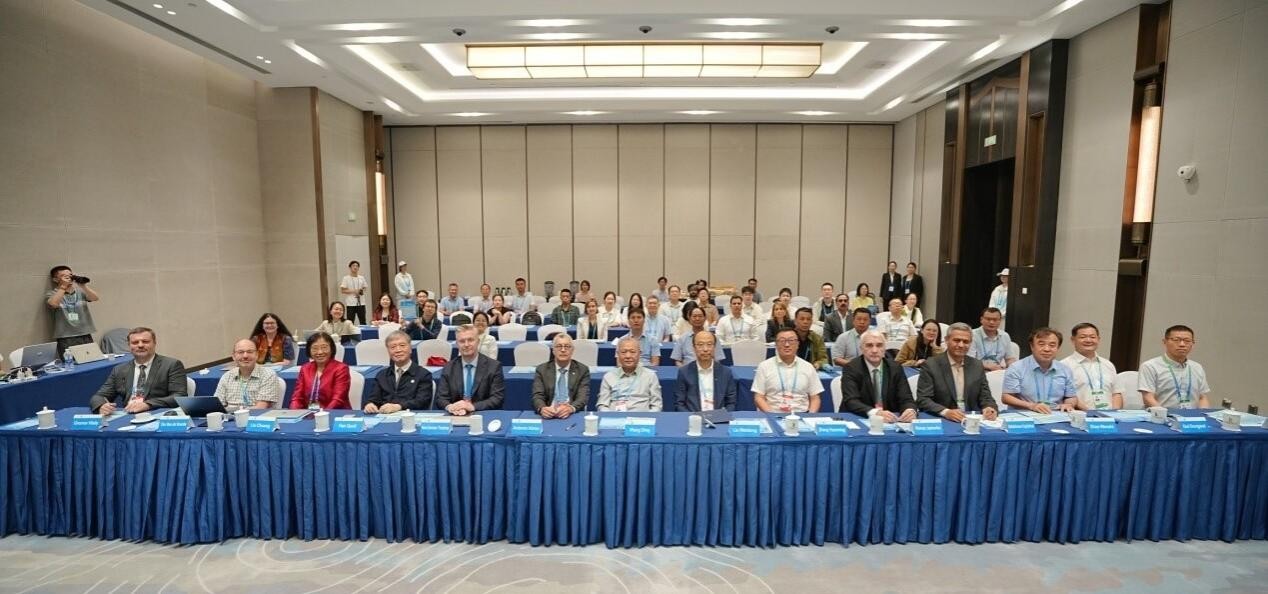Oasis Biosphere Reserves Empower the Sustainable Development in Arid Lands Successfully Held — Side Event of the 5th World Congress of Biosphere Reserves
2025-09-29
As the 5th World Congress of Biosphere Reserves (WCBR) convened in Hangzhou, a side event, "Oasis Biosphere Reserves Empower the Sustainable Development in Arid Lands", was successfully held on September 24th. The event underscored the critical importance of oases in arid lands, aiming to strengthen biodiversity conservation and safeguard oasis ecological security. It also sought to promote academic exchanges and international collaborations through the release of new research findings and joint initiatives.
The event was organized by the Xinjiang Institute of Ecology and Geography (XIEG) of the Chinese Academy of Sciences (CAS), and co-organized with the State Key Laboratory of Ecological Safety and Sustainable Development in Arid Lands, the Institute of Geographic Sciences and Natural Resources Research of CAS, the China-Tajikistan Belt and Road Joint Laboratory on Biodiversity Conservation and Sustainable Use, the Kazakhstan National Committee for the UNESCO Programme "Man and the Biosphere (MAB)", the Ministry of Ecology, Environmental Protection and Climate Change of Uzbekistan, the Institute of Zoology of Kazakhstan, the Biodiversity Conservation Alliance for Arid Lands (BCAA), and the Global Change Research Data Publishing and Repository.
Representatives from UNESCO, the Chinese National Committee for the Man and the Biosphere Programme (MAB China), and the Bureau of International Cooperation of CAS attended the event. The event brought together over 60 representatives from China, Belgium, Kazakhstan, Uzbekistan, Pakistan, and other countries.
Presiding over the opening ceremony, ZHANG Yuanming, Director of XIEG, extended a warm welcome to the distinguished leaders and delegates in attendance. He highlighted the indispensable role of arid lands within global ecosystems, while also acknowledging their fragility and vulnerability to the escalating pressures of climate change. "Oases," he remarked, "are the true 'pearls of arid regions.' Despite the fact that they constitute a mere 4% of Xinjiang's landmass, these oases sustain nearly 90% of the population, rendering them the linchpins of sustainable development in arid landscapes."
ZHANG expressed his hope for the side event to serve as an international nexus for interdisciplinary dialogue and multi-stakeholder engagement, fostering crucial data sharing and illuminating pathways towards sustainable oasis development. He also emphasized the need for scientific and technological support to build a future characterized by harmonious coexistence between humanity and nature.
The distinguished speakers attending the event included WANG Ding, Secretary-General of MAB China, Antonio Abreu, Director of the Division of Ecological and Earth Sciences in UNESCO’s Natural Sciences Sector and Secretary of the MAB Programme, and LIU Weidong, Director General of the Bureau of International Cooperation of CAS. They commended the successful convening of the side event and emphasized the significance and urgency of oasis biosphere research in arid lands. They also lauded the achievements of XIEG and other relevant research institutions, and put forward suggestions for future collaborations.
A key highlight of the event was the presentation of Prof. GUI Dongwei's team's research on Global Distribution and Catalogue of Oases. Delivered through both a comprehensive report and a compelling video, the findings offered a systematic overview of oases, their global distribution, regional proportions, and overarching significance. The team also released a vital accompanying dataset, poised to accelerate further research into oasis expansion and contraction, and to provide essential data for the quantitative assessment of oasis health.
The academic exchange session fostered robust discussions with presentations from esteemed researchers, including Prof. ZHANG Yuanming, Director of XIEG, Hans Dencker Thulstrup ,Chief of Section for MAB Networking, Biosphere Reserves and Capacity Building at UNESCO, Mallakhanov Sayidafzal, Deputy Head of the Ecotourism Development and Hunting Department at the Ministry of Ecology, Environmental Protection and Climate Change of Uzbekistan, Prof. LIU Chuang from Institute of Geographic Sciences and Natural Resources Research, CAS, and Prof. ZHAO Wenzhi from Northwest Institute of Eco-Environment and Resources, CAS. Their presentations delved into the current status and threats to biodiversity in arid regions, biosphere reserve networks and joint initiatives, and the significance of biospheres in arid lands. The session also illuminated the critical need for data publication and services for arid region studies under global change, alongside advancing oasis development and desertification control systems.
Two significant initiatives were officially launched during the event: the "Biosphere Reserves Research Network in Arid Lands" and the "Cooperation on Oasis Biosphere Reserves". These two initiatives represent substantial strides forward in advancing the protection and research of oasis biosphere reserves.
The Man and the Biosphere Programme (MAB), launched by UNESCO in 1971, is an intergovernmental programme. The World Congress of Biosphere Reserves (WCBR), the largest international event under the MAB framework, is convened roughly once every decade. Globally, 19 biosphere reserves across 12 countries conserve oasis ecosystems. Currently, China has 34 biosphere reserves within the World Network of Biosphere Reserves. Among them, the Bogeda Biosphere Reserve located in Xinjiang's arid lands, is closely related to oasis ecosystems.

Participants at the event. (Image by XIEG)
Contact
LONG Huaping
Xinjiang Institute of Ecology and Geography
E-mail: longhp@ms.xjb.ac.cn
Web: http://english.egi.cas.cn



